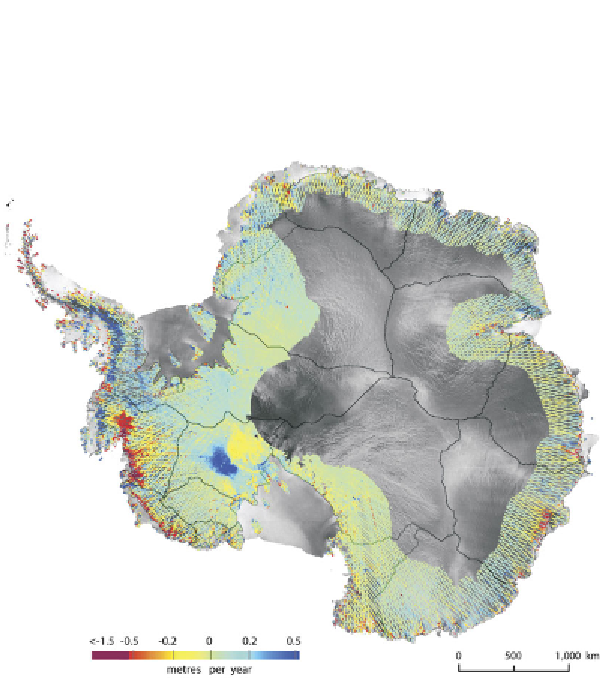Geoscience Reference
In-Depth Information
Figure 11.2
Recent changes in ice sheet elevation determined from ICESAT laser data
(Pritchard, H. D., R. J. Arthern, D. G. Vaughan et al. (2009). Extensive dynamic thinning on the
margins of the Greenland and Antarctic ice sheets. Nature, 461, 971
-
975)
Over the same epoch, there have been reductions or complete loss of most
of the major ice shelves on the Peninsula. Ice shelves do not directly contribute to
sea-level rise as they are already
floating, but they do have a buttressing effect on the
glaciers feeding them. For example, since the Larsen B ice shelf on the eastern side of
the Antarctic Peninsula broke up in 2002, there has been a marked (up to six times)
acceleration of the glaciers that used to
flow into the ice-shelf. Also there is now
compelling evidence that the breakup of the Larson B ice shelf can be attributed
to anthropogenic-induced changes to the pattern and strength of atmospheric
circulation. The westerly winds around Antarctica have increased by about 15
-
20%
in the last 30 years as a result of combined effects of increased greenhouse gas
concentrations and the impacts of the ozone hole. This increased the warm air
delivered to the eastern side of the Antarctic Peninsula and hence the melting and
subsequent breakup.
The West Antarctic Ice Sheet (WAIS) is very different from the other two
components of the ice sheet. There is an area at the southern end of the Antarctic
Peninsula where there is a modest accumulation of snow. This is another impact of



Search WWH ::

Custom Search